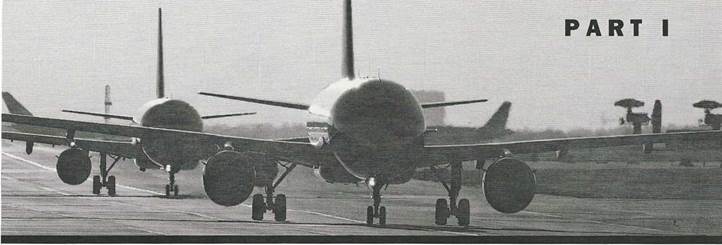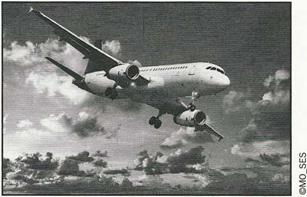AVIATION &ТНЕ ROLE OF GOVERNMENT
For over 100 years, the evolution of commercial aviation has been a worldwide phenomenon. It has been the result of a combination of individual and corporate effort, and it has proceeded because of, and sometimes in spite of, the involvement of governments. In the United States, commercial aviation developed under principles of private enterprise in tension with government in its role of protecting the public interest. In contrast, throughout most of the rest of the world, governments had assumed the lead in innovation, development, and promotion of civil aviation, consistent with their more socialized economic systems and philosophies.
The cornerstone of the American experiment is government-protected individual freedom, in the words of the Declaration of Independence, the right to “life, liberty, and the pursuit of happiness.” This freedom extends to business: the freedom to risk capital and ingenuity in return for financial gain. Failures resulting from these risks are borne individually or corporately, while the fruits of success often accrue to the benefit of the many.
The government of the United States traditionally has not been an intrusive government; rather, it was created in reaction to intrusive, oppressive foreign government. The powers of the federal government are derived from the people and are granted specifically in the Constitution of the United States. The government has no other source of power. Involvement of the federal government in the affairs of its citizens is authorized only as a result of duly enacted legislation (statutory law) by the Congress, and then only as to those matters over which it is given jurisdiction by the provisions of the Constitution.
When the American government was created, land transportation was primarily a private affair. The federal government took cognizance of its admiralty (maritime and shipping) responsibilities, but otherwise gave little heed to matters of travel. The obligation of government to attend to the “public welfare” extended to matters of interstate commerce, banking, defense, and the delivery of mail through the Post Office Department. The government experimented with trail improvement on its western margins (Ohio Territory, for instance) and road building (Post roads) incident to the delivery of the mails, but did little else. As the technological advances of the Industrial Revolution proceeded, so did the manufacturing and commercial enterprises that utilized them. Corporate forms of existence came into general use. Westward migration followed the steam locomotive and the telegraph across the country. The government was increasingly drawn into subsidy
and regulation. These developments were followed by the reciprocating gasoline engine, the automobile, and the telephone. The transmission of electricity, wireless communication, commercial radio, and the airplane came after. The role of government continued to expand as the technological advances of the Industrial Revolution increasingly impacted the nation’s commerce and its people.
The concepts of the federal maritime law were applied to the railroads when they appeared, and the law was modified as necessary to account for differences between these two modes of transport. Government experience with the railroads was applied to the new air transport industry when, in turn, it appeared. The result has been the development of a similar government methodology for the treatment of all forms of commercial transportation. Government in the United States remained mostly in the background even into the early part of the 20th century, but it remained ready to apply a steadying hand to prevent excesses of private or corporate self-interest.
The other primary interest of government in modern transportation involved issues of safety, which was legally appropriate under the Constitution in the interest of the public welfare. Government involvement in transportation safety issues first appeared in connection with railroad employees, who were suffering egregious personal injury due to the nature of railroading in the late 19th and early 20th centuries. Government’s first involvement with aviation safety issues, in 1925, related to certification of pilots and aircraft, and airworthiness concerns. Safety would become the overriding governmental interest in commercial aviation as the 20th century progressed and as economic regulation by the government was phased out, beginning in 1978.
The early involvement of the government of the United States in transportation issues was mainly reactive, but also partly proactive. The railroad industry – government relationship was fairly well-established by the time the first practical airplane was developed. The railroads were privately owned, but the government actively regulated them. The United States experimented with government ownership of the railroads during World War I, but ended up returning them to corporate ownership after the war.
When the airplane appeared, there was no practical reason, nor any legal justification, for any government involvement. The audacious and romantic notion of flight was not put to practical use for over a decade after the Wrights’ first flight, then in war in Europe in 1914. By war’s end in 1918, in the United States the airplane was quickly returned to curiosity status, being used in barnstorming exhibitions, banner towing, and the occasional sightseeing flight. In the first part of the 20th century, America ran on wheels, steel ones and ever increasingly on rubber-tired wheels, and it did not have any immediate need for the airplane.[1]
In Europe, a limited commercial success had already been seen in Germany with the rise and deployment of dirigibles by 1909. European governments soon
appreciated the potential commercial use of the airplane, particularly given the ruinous state of Europe’s railroads after the devastation of World War I. The English Channel lay between London and Paris, separating two of the premier commercial and cultural metropolitan centers of the world, and it provided an obvious reason for commercial aviation to succeed. European governments owned the railroads. It was natural that the first commercial airlines created after World War I would also be owned by European governments.
But the United States was staunchly capitalistic. If aviation for any purpose was to succeed in this country, it was going to be up to a new breed of adventurer and entrepreneur to make it happen. Who they were and how they made it happen is the larger part of the account of the first century of flight. The story of airmail, the politics of the Great Depression, the creation of private airlines, the impact of World War II, the dawning of the jet age, the deregulation of the airlines, the advent of world competition, the space age, and the commercialization of space are all part of that adventure. The achievements of the first century of flight required the best from many worlds. The realms of business and finance, of engineering and science, and of government struggled together to overcome the uncertainties at the leading edge of a new technology. These struggles continue even today as the air transport industry, the flying public, and the government attempt to define the role that air transportation should play in the 21st century.
As a new millennium gets underway, government is being called upon to play perhaps its most decisive role ever in air transportation: the protection of the traveling public from international terrorism, and the pursuit of its ultimate defeat. [2] 1

ABOUT THE AUTHOR
Harry W. Lawrence is a member of the faculty of Embry-Riddle Aeronautical University, Worldwide, and holds the rank of Adjunct Assistant Professor.
He received his Juris Doctor degree from the University of North Carolina at Chapel Hill, 1965, and was admitted to practice in Florida, Tennessee, and the District of Columbia. He was admitted to practice before the Supreme Court of the United States and Courts of the Fifth, Sixth, and Eleventh Circuits of the United States. He served as counsel for Seaboard Coast Line Railroad and Clinchfield Railroad Company (now CSX). He is Board Certified in Civil Trial Law by the Florida Bar. His practice of law had an emphasis on insurance, maritime, aviation, and railroad transportation issues.
He holds a Commercial Pilot Certificate with instrument, multiengine, glider, seaplane, and jet type ratings. He has been corporate owner and operator of fixed – base operations for general aviation, including turbojet commercial aircraft.
![]()

Foundation

 Beginnings
Beginnings
The Industrial Revolution
The Railroads
The Industrial Age and the Rise of Unionism










